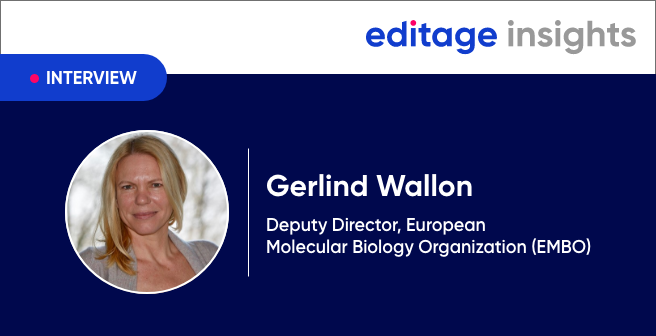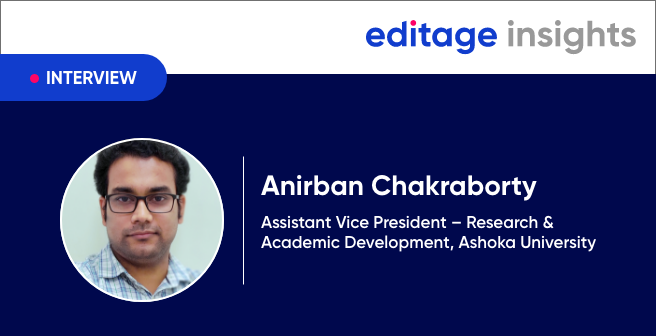ScienceOpen: Inviting researchers to openly participate in the process of research communication

ScienceOpen is an independent start-up founded by Tibor Tscheke and Alexander Grossmann in 2013. It operates from Berlin, Boston, and Budapest. The technology behind the ScienceOpen platform is provided by Ovitas, a CMS-WorkFlow-XML software architecture company. ScienceOpen functions as a platform for scientific communication. From joining informal networks and peer reviewing to open access publishing, authors can use it in a variety of ways. Within a short time, ScienceOpen has gained popularity as a vigorous proponent of open access publishing as well as a driving force for changes in the conventional publication system. The highlight of the platform is the integration of a post-publication peer review model whereby researchers do peer reviews for other researchers.
In this interview, I talk to Stephanie Dawson, the CEO of ScienceOpen, to know more about the company as well as discuss some broader issues around open access publishing. In this first part, Stephanie tells us more about the vision and mission of ScienceOpen, elaborating on the range of activities researchers can undertake with the platform. Stephanie explains how the platform uses the “context” of an article such that researchers can better discover and interact with it. ScienceOpen is also working towards building a well-connected community of authors who can advance their careers and increase the visibility of their research.
About Stephanie Dawson: Following a degree in Biology at Yale University, Stephanie worked at the labs of Susan Parkhurst at the Fred Hutchinson Cancer Research Center in Seattle, Washington, and Ralph Rupp, at the MPG Friedrich Miescher Laboratory in Tübingen, Germany. After this, she changed fields and chose to complete a PhD in German Literature from the University of Washington. From 2001-2012, she played various editorial and publishing roles at the academic publisher De Gruyter in Berlin and was in involved in journals and book publishing in the fields of biology and chemistry. Stephanie joined ScienceOpen in July 2013 and hasn’t looked back since!
What does ScienceOpen do? Why do you regard yourselves as a “Research and Publishing Network”?
ScienceOpen is a discovery and communication platform specializing in public peer review. It puts the researcher and the research article at the center. On ScienceOpen, users can search and browse for relevant content among 13 million records across all disciplines. They can peer review, recommend, or comment on any of those articles, apply to be an Editor, create their own topical Collection, or submit their own original research results. We use the context of the individual article in innovative ways to make research more discoverable. When users search for academic papers on ScienceOpen, they can use filters such as reference list, citation number, Altmetric™ score, date, usage, and rating to retrieve more refined results.
We understand “publishing” in the broad sense of making public – adding your voice to the scientific discourse. Therefore, very peer review on ScienceOpen receives a CrossRef DOI and is treated as a citable “publication” that researchers can refer to. We also support the publication of original research articles, opinion papers, posters, case studies, negative results, data publications, and other types of research output into the ScienceOpen database. Here, researchers can publish their paper before it is peer reviewed, develop it based on post-publication feedback they receive from other users, function as peer reviewers themselves, and join a community of researchers actively helping science grow.
How does ScienceOpen facilitate “constructive engagement between all stakeholders in scholarly communication”?
At ScienceOpen, we are trying to balance the needs of researchers, publishers, and editors. We favor open access content, because we believe that the free flow of information through the Internet is the best way to enable science to meet some of the big challenges facing all us today. However, having spent 12 years in the publishing industry as journal editor, book editor, and finally editorial director, I have great respect for the effort and value that publishers add. As an editor, I cared about every single article and supported every author – I remember getting up at 5 in the morning to check last proofs before printing and calling authors after work to talk about a strange-looking correction. I believe my efforts have made a small contribution to the improvement of the scientific record. So even though those articles were sold under a subscription model, I would argue that they need to be made more discoverable and the context around them should be opened up. Based on this idea, at ScienceOpen, we link back to the publisher version of record wherever possible. We also deliberately did not build our platform on the crowd-sourcing model of users uploading their PDFs. We want to work directly with publishers to index their content in our database so that we are able to share the highest quality of information. But by doing things like adding open licensing information to the XML metadata for a journal, for example, or by indexing the references, we are making it just that much more open. So we’re trying to constructively engage all stakeholders in academic publishing.
How do you allow users to “organize scientific communication”?
By inviting users to add to the context of an article, we help them take control of the process of scientific communication. We provide two tools for this – peer review and Collections. The conventional pre-publication peer model may not be sustainable in the long run mainly for two reasons. First, the number of articles and journals continues to grow explosively. Add to this the spike in excellent research from developing countries. Given the tsunami of research information available, it has become increasingly difficult to identify which result is useful and which is not because of poorly executed experiments. I don’t believe that we can depend on journal brands to help make these decisions any more. Each article has its own merits. Second, the conventional peer review model is more like assigning a “stamp of approval” to an article. But peer review is so much more than that! It’s about inviting researchers to participate in the development of research: “Did you find a paper or protocol particularly useful? Tell the scientific community!” On ScienceOpen, doing post-publication peer review is open to all, fast (and free). This also helps scientists in a field to make informed decisions about their next experiment.
Through our Collection feature, we take peer evaluation to the next level. I’ve often heard researchers remark that a really exciting paper was not published in a top journal because it was too cutting-edge. How are new researchers supposed to find these hidden gems? At ScienceOpen, we provide “Collections” – an editorially curated space to support discovery. ScienceOpen users can apply to become a Collection editor and then draw together the best research in their field from 13 million articles from across all journals and publishers to create and maintain a Collection. They can publish an editorial about their selection, provide editorial comments on each article, peer review or invite reviewers, as well as share and discuss the research in their Collection. In the long run, we want it to matter just as much that your article was selected by a certain editor for a ScienceOpen Collection after publication, as it does when a journal accepts your manuscript. For example, Barry Marshall, who won the Nobel Prize in Medicine in 2005, has created a collection on Helicobacter evolution and included this article from PLoS One, not usually considered a high impact journal. We believe that excellent research can be published anywhere and it is important for experts to know about and share such research.
ScienceOpen also publishes original research articles. Do you accept submissions from all specific disciplines? How do authors benefit from publishing their papers on ScienceOpen?
Our publishing outlet “ScienceOpen Research” accepts submissions from all disciplines and article types: Original research articles, reviews, case reports, negative results, opinion articles, data publications, observations, and posters. The idea was to let researchers circumvent journal publishing altogether and publish directly into an indexing database. The main advantages of publishing with ScienceOpen Research are speed, transparency, and discoverability. After a quick editorial check, we publish the article with a CC BY 4.0 open access license, create high quality full text XML, and open it up for post-publication peer review. Authors may either bring their own peer endorsements (PRE), where the names of the reviewers are published with the paper. Or, they can rely on both open and invited post-publication discussion of their work and submit a revision based on the feedback they receive.
Articles are immediately indexed in ScienceOpen and citations and Altmetric scores are tracked. They are placed in the context of the references that they cite and can be shared, peer reviewed, and added to relevant Collections.
Do authors have to pay publication charges?
We charge 800 USD for an article with up to two revisions in the first year or 400 USD if the author provides two peer endorsements. Posters are published for free. We offer fee waivers for authors unable to afford this.
Could you tell us about the post-publication peer review model adopted by ScienceOpen? How does that work?
Peer review is the heart of scientific publishing and something we take very seriously at ScienceOpen. Nearly every experienced researcher I have talked to has some story of a long-drawn peer review process that has occasionally resulted in the research being scooped or an unfair peer review reports leading to manuscript rejection. We believe that in essence, in peer review, scientists are evaluating the work of other scientists and if you take away the pressure of a “high impact” brand, they can give each other useful feedback that is interesting to a researcher delving deeper into the topic. In fact, colleagues at F1000Research with a similar post-publication review have said that these reviews are usually read first.
In academia, it matters if you are an expert, so we require all reviews to be fully transparent, disclosing researchers’ names with their ORCID IDs. And to qualify to be a peer reviewer, researchers should have and at least 5 publications to their credit. Our idea was that this level of openness and transparency will raise the civility of the discussion, and this is certainly something we have experienced with peer reviews on our platform.
Peer reviews are treated as separate documents at ScienceOpen. They receive a CrossRef DOI to track citations, an Altmetric score, and are searchable on ScienceOpen. Peer Review authors can add their review to their ORCID, Impact Story CV. or Publons profile.
One of the most interesting features of ScienceOpen is the fact that it allows users to comment on others’ work. Do users receive any form of credit or recognition for commenting on someone else’s research?
As I mentioned earlier, we really want to get a discussion going around the scientific literature. The best part about the Internet is that it is interactive. We draw on the experiences of our fellow world citizens to make decisions in nearly every aspect of our life – we write reviews of restaurants, hotels, taxi drivers, books, and even refrigerators! And the platforms that have been most successful – Amazon, TripAdvisor, Uber, and Airbnb – have all tapped into this potential. Why can’t the research community use these internet tools to make the peer evaluation of research faster, more global, more open and networked? That is our vision.
But we also understand that getting there requires a culture and mindset change that cannot happen immediately or within a short period. Of course, young researchers may be hesitant to openly comment or review an article out of concern for how it might affect their career, but I hope that they will find mentors who encourage them to speak their minds.
We make a distinction between peer reviewing, which includes rating the article and writing a report, and commenting. Peer reviewers are set apart by their publication record. In order to be able to comment, users need to have an ORCID ID for transparency; they don’t need to have a publication record to be able to comment. Publicly posting comments can be a good way for young researchers to ask questions or share their experiences. Commenting has a lower entry barrier. However, comments do not receive a DOI as a peer review report does.
ScienceOpen fetches information from a user’s ORCID profile. Does this mean that users without an ORCID profile cannot use ScienceOpen?
I am talking a lot about ORCID so you can imagine that it a central partner of ScienceOpen. Our search and discovery tools are completely freely available with no registration requirement. Users can also complete an easy one-click registration with their Facebook or LinkedIn accounts. But to enable researchers to contribute to the platform – as a peer reviewer, Collection editor, or author – we require a link to their ORCID profiles. This helps us promote transparency for all parties.
How do you aggregate OA articles?
The core of the ScienceOpen platform, which we update daily, is made up of open access articles from the PubMed Central Open Access Data Subset, SciELO, and arXiv. We also work directly with publishers to add both open access and subscription content.
From this core database of articles, we began creating a citation network that allows users to sort search results by citation numbers. We analyze the references of each article, roughly 35-50 references per article, and create article records for those citations. We enrich this with additional metadata and link up authors, journals, publishers, keywords, DOI, and other features. We now have over 50 million citations and 13 million articles and records on the platform. We show the full text for around 2.2 million articles. The remaining are linked back to the version of record through the DOI.
Could you tell us more about your user base?
The largest part of our user base is in the US and Europe, but we our usage is on the increase in South America – certainly related to our integration of SciELO, the largest open access publisher on that side. We hope to integrate some African open access journals soon. We are also strengthening our ties with Asia. Last year I spoke at a publisher conference in Shanghai and realized that the tools I use to inform myself, such as Twitter and Facebook, don’t exist there, so we recently opened up a Weibo and a WeChat account in Chinese.
We are making these efforts because we believe that science should be globally open in order to be able to solve global problems. There are certainly new ideas and unconventional perspectives coming out of the developing world that may be just what we need to meet the big challenges ahead. But we have to listen. So ScienceOpen is quite keen on increasing its user base and becoming more and more global.
What can the scholarly publishing community expect from ScienceOpen in the near future?
Expect to see content from new sources on the site as we continue to grow this year! We are deeply committed to opening up the scientific record for enabling a more well-connected global scientific community. So we will forge more global partnerships. We also expect to experiment with new formats and content types. Researchers want to start their search for information on a global platform where they can search across all journals and publishers as well as content types, so we are working to integrate new sources along these lines.
This brings us to the end of this segment. Check out the next part where we ask Stephanie to share her views on post-publication peer review and the impact factor.



